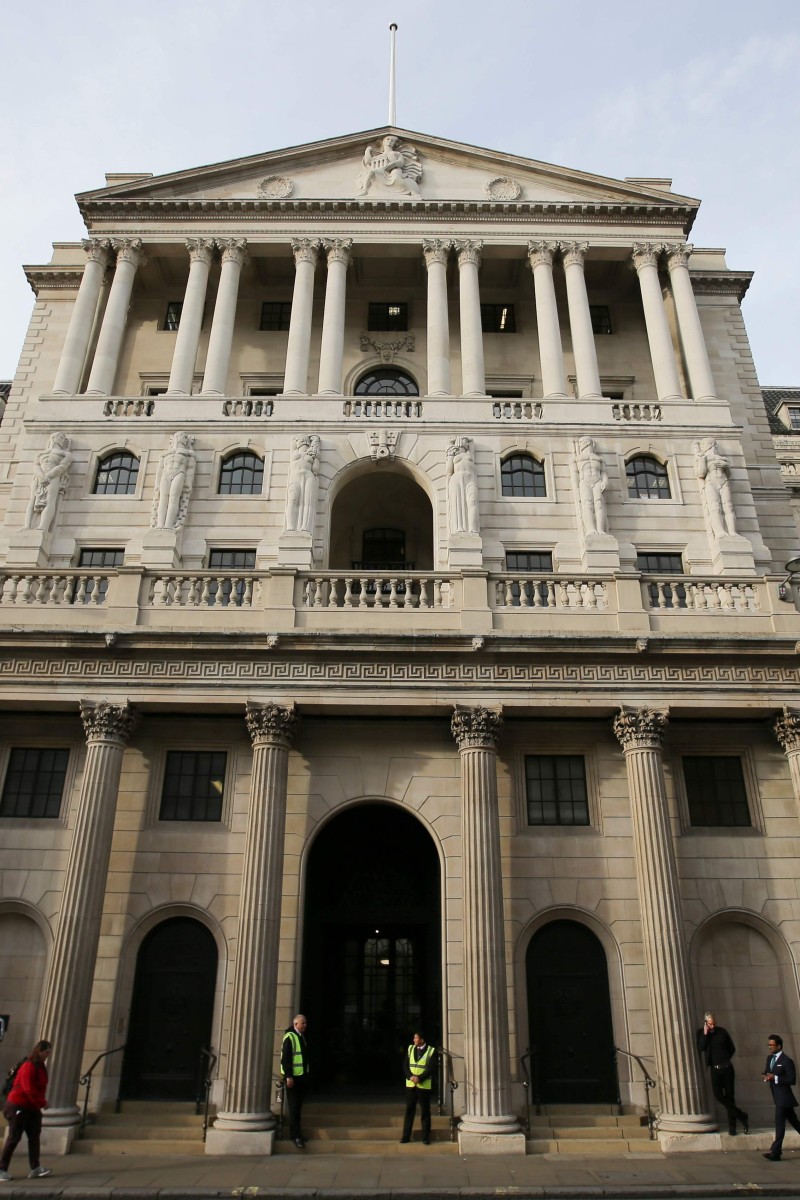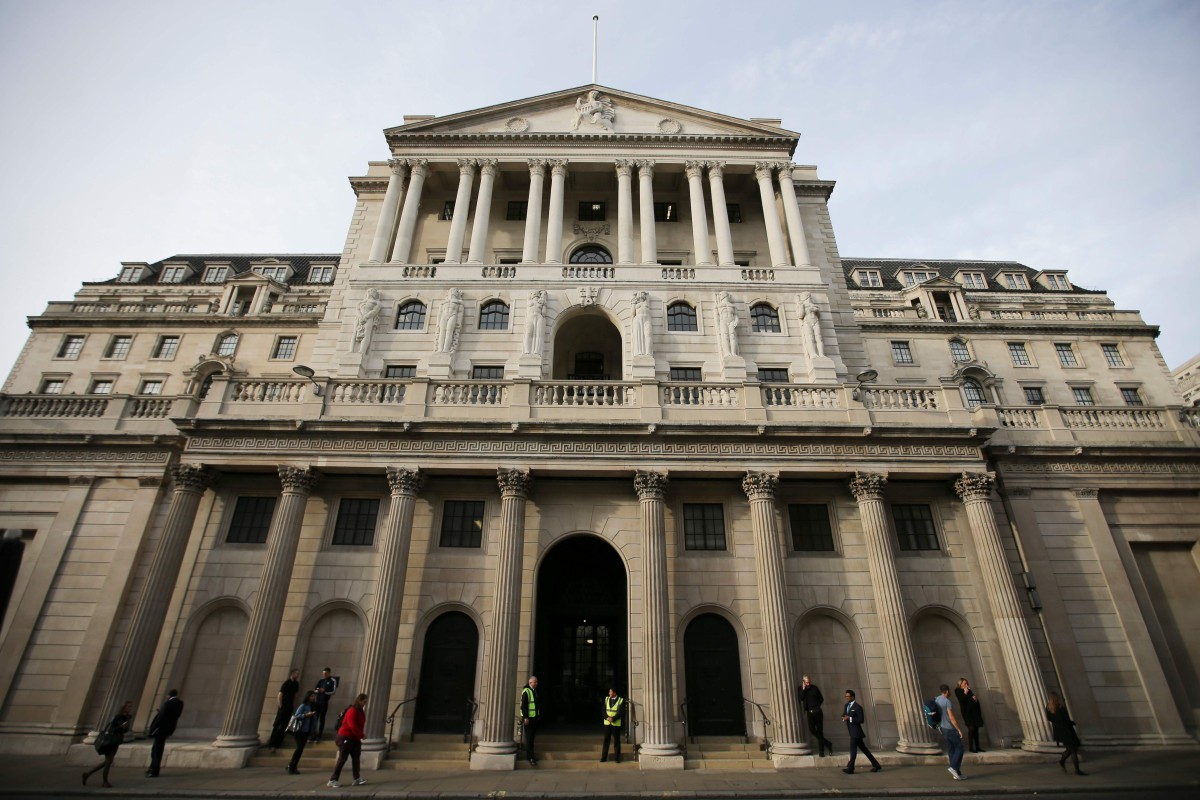
How interest rates impact the rest of the world
Interest rate announcements by the US Federal Reserve and the Bank of England are eagerly awaited as those decisions can have an impact on the world economic outlook

 The Bank of England raised interest rates.
The Bank of England raised interest rates. Economists await interest rate announcements with a degree of speculation, anticipation and angst perhaps only matched by graduating high school students awaiting college admission results. And, if I dare extend the analogy, the US Federal Reserve and the Bank of England are in the Ivy League of central banks, making their pronouncements particularly big news.
On November 2, in a move that markets had largely predicted, the Bank of England’s Monetary Policy Committee voted 7-2 to raise its base rate from 0.25 per cent to 0.5 per cent. It was the first increase in a decade. Across the Atlantic, the US Federal Reserve has increased interest rates four times since the 2008 financial crisis, and markets have assessed that there is a 98 per cent chance it will do so for a fifth time next month. The US interest rate now sits in a range between 1 and 1.25 per cent.
Why has the Bank of England lagged behind the Federal Reserve in increasing the cost of borrowing? There are two main reasons: a stronger economic recovery in the US and uncertainty surrounding Brexit in the UK. The American labour market has performed strongly over the past few years, and corporate earnings have hit record highs. In Britain, on the other hand, Bank of England governor Mark Carney cut rates as recently as last year in a reaction to Britain’s vote to leave the European Union.
What compelled the Bank of England to raise interest rates? Unemployment in Britain is at a 42-year low, and annual inflation has exceeded the bank’s target of two per cent. The bank interpreted these as clear signs that the economy is reaching its full potential and thus monetary policy need not be dramatically expansionary.
Higher interest rates reward saving over spending. This cools economies and helps keep inflation in check, while benefiting those, such as pensioners, who hold most of their assets in interest-bearing instruments. However, by discouraging borrowing, higher interest rates also reduce consumption and investment in the economy. This dampens growth.
In a recent report, the International Monetary Fund (IMF) urged central bankers to be cautious. It said “monetary policy settings should remain accommodative”. The IMF cited “still-subdued” wages as indicative of a sluggish world economy that is not fully represented by cyclically low unemployment rates.
The IMF does note, however, that “stretched asset valuations and increasing leverage” do present serious challenges should interest rates remain low. The low interest environment of the past decade has caused concern about indebtedness among consumers and firms. This raises the spectre of a future “Minsky moment”, when a small economic hiccup can cause the collapse of an ever more speculative column of investments, setting off a credit crisis across the economy. That said, the IMF suggests “micro- and macroprudential supervision”– regulatory measures and tests of institutions’ ability to withstand credit shocks – as superior alternatives to the relatively blunt tool of interest rates increases.
Many analysts concur with this view, noting that higher inflation in Britain is largely a temporary consequence of the pound’s depreciation, which increases the price of imports, and will soon tail off without any action from the Bank of England. In addition, economic headwinds remain from the still uncertain outcome of Brexit negotiations. An unfavourable deal for Britain, or even no deal at all, could seriously damage the country’s economic growth.
Commentators also observe that the British economy is highly sensitive to interest rates rises. Compared to America, twice as many mortgages in Britain are variable rate instead of fixed rate, meaning that an increase in interest rates makes it more difficult to come good on the payments.
But perhaps, as high schoolers do with college admission decisions, some commentators are getting too worked up about the recent interest rate increase. After all, the Bank of England only raised rates by an unspectacular 25 basis points (0.25 per cent), and has said that it intends to proceed with further rate hikes only gradually, if at all.
On the other side of the pond, the Federal Reserve appears likely to continue on its path of periodic interest rate hikes, as economic expansion chugs along. The president of the Boston Fed said in an interview with The New York Times that he would like to see the Federal funds rate at 2 per cent by the end of 2018.
Underpinning America’s monetary policy are economic stability and high levels of employment. Though inflation, currently at 1.3 per cent, is still below the Federal Reserve’s 2 per cent target, it is expected to pick up in the medium term.
Further rate increases in the United States do run the risk of choking America’s delicate recovery, especially in a time of political uncertainty and heightened geopolitical tensions.
Internationally, an increase in the Federal Funds rate would see the US dollar appreciate, making dollar-denominated debts abroad more difficult to repay. This could imperil financial health in emerging markets. The Asian financial crisis of 1997, for example, was exacerbated by the spiralling costs of servicing US dollar debts as local currencies came under attack. These risks considered, emerging markets do hold far less dollar-denominated debts than they once did, somewhat minimising the risk associated with an appreciating US dollar.
Monetary policy is a delicate task. To make that little analogy of mine even more outrageous: just as college admissions officers have a tough task differentiating between the legions of highly qualified applicants, so too do central bankers struggle to achieve consensus on which theories and data to assign greatest weight. And ultimately, despite the media hullabaloo, it is the fundamentals of the economy that drive interest rate changes more than tweaking the interest rates to drive the economy.
Edited by M. J. Premaratne
